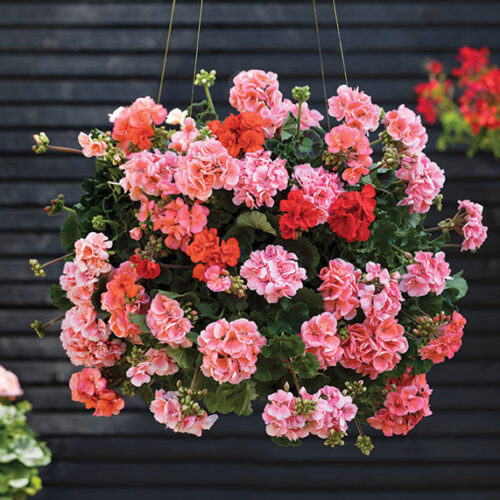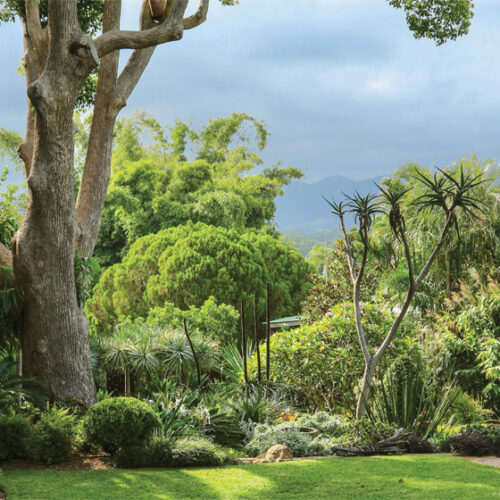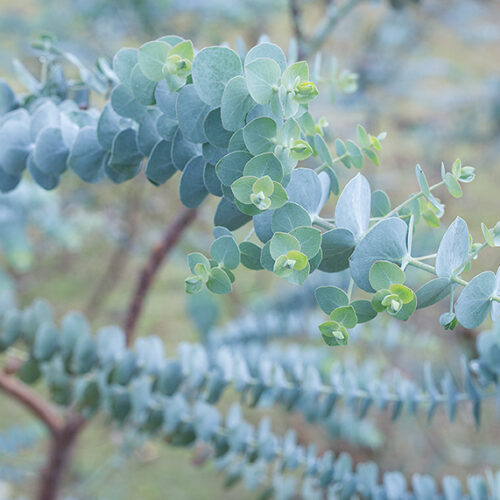Dramatic paws
2025-07-07T09:22:15+10:00
Kangaroo paws add bold colour and instant impact to any garden. Award-winning landscape designer Emmaline Bowman reveals how to incorporate them in your garden design.
What kangaroo paws bring to a design
- Their flowers are the main drawcard – they’re unlike anything else and catch your attention immediately.
- Tall forms add height and structure, and when they’re not in bloom, their clean, green strappy foliage blends seamlessly into the garden.
How to use them
- Use kangaroo paws as striking accents dotted throughout the garden, rather than en masse – too many can quickly become overpowering. In smaller gardens, a single plant here and there is often enough to create interest. In larger spaces, group the plants in threes or fives for a bolder, more unified effect.
- Lining a fence or wall with kangaroo paws transforms it into a feature, especially when paired with more subdued plantings to maintain visual balance.
- Native to the southern coast of Western Australia, kangaroo paws will tolerate part shade but flower more abundantly in full sun. Although they’re drought-tolerant, they perform best with extra water and the taller varieties can even thrive in boggy areas.

Favourite varieties
- Forms of Anigozanthos flavidus or hybrids with A. flavidus as a parent have tall flowers, and are long lasting and easy to divide. They tend to suit a wide range of gardens because they thrive with water and nutrients, making them ideal for planting alongside non-natives that require similar conditions. In contrast, smaller varieties tend to be short-lived. They produce less foliage and can easily be overtaken by more vigorous neighbours.
Combining kangaroo paws with other plants
- Tall kangaroo paws are most commonly found in shades of yellow, orange and red, although other colours are being bred and will become more available. Try to choose colours that complement each other and the rest of your planting palette.
- Yellow and orange kangaroo paws pair beautifully with cheerful natives such as paper daisies, billy buttons and yellow buttons. Orange also looks striking when used alongside purples and pinks, creating bold, high-contrast combinations. Kangaroo paws can be used much like geums or salvias – to inject vibrant pops of colour throughout the garden.
- Red kangaroo paws tend to be more dominant, which can be both a strength and a challenge. To soften their intensity, try combining them with lighter tones such as white. We often pair them with winged everlasting (Ammobium alatum), which works as a neutral anchor and opens the door to adding other colours such as pinks and purples. As red is so attention-grabbing, these varieties look especially effective in part-shaded areas, where they pop against the green foliage of plants such as ferns, shrubs and leafy groundcovers.
- To further soften strong tones, consider weaving in bluish-toned grasses or plants with silvery foliage, such as westringia, diplolaena, or Eucalyptus ‘Moon Lagoon’.
- Kangaroo paws respond well to regular feeding, which promotes lush, leafy growth and more vibrant, longer-lasting flowers. Fertilise them every 6–8 weeks during the growing season for best results, especially in pots or poor soils.
Can tall varieties be grown in pots?
Yes! They’re fantastic in pots, adding a vibrant floral touch to balconies or small spaces such as courtyards. Showy yet easy to maintain, they thrive in containers with a diameter of 40–50cm. Plant one kangaroo paw in each pot, but feel free to underplant with groundcovers such as Scaevola ‘Mauve Clusters’, Dampiera rosmarinifolia, Yellow buttons (Chrysocephalum apiculatum) and Austral stork’s bill (Pelargonium australe) to create a miniature garden. A saucer underneath will help retain moisture and keep them happy for longer.
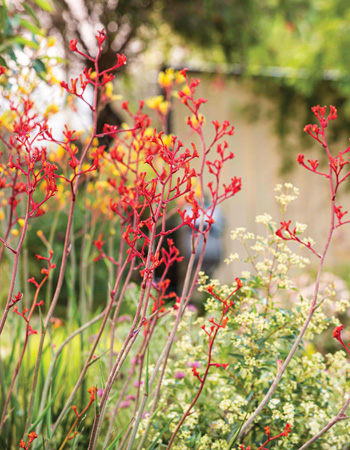
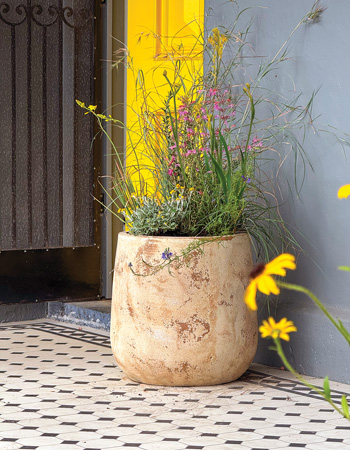
Words by Emmaline Bowman
Header image: ‘Carnivale’ kangaroo paw captured by Brent Wilson


